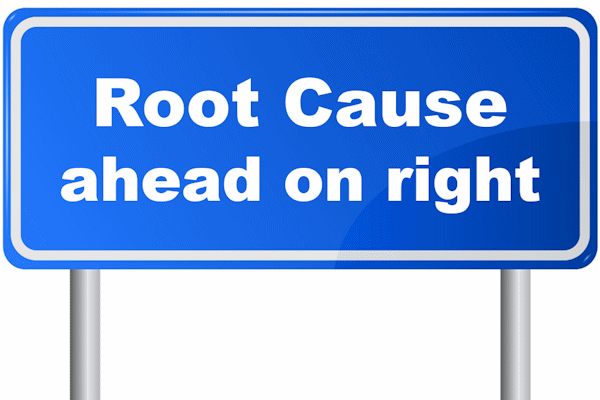By Mike Loughrin, CEO for Transformance Advisors
Through the Years
Make no mistake, the Evolution of Lean has helped make and keep it the #1 organizational improvement program. Lean has been wonderful for many organizations through the years and is significantly better today than when it was first practiced by just a few.
As an improvement program, it is much better now, than in 1988 when the word “Lean” was first used by John Krafcik in “Triumph of the Lean Production System”.
Later, Lean exploded onto the scene when “Lean Thinking” by James P. Womack and Daniel T. Jones was published in 1996. This book gave us the 5 principles of Lean based on the Toyota Production System.
Moving beyond Toyota, Lean is now the chosen improvement program for healthcare, financial services, and many other types of organizations. To achieve this incredible transformation into an almost universal improvement program has taken a willingness of Lean practitioners to adjust and evolve to meet the challenges of today’s organizations.

“We’ve learned to treat Lean not as a one-time initiative, but as a dynamic, long-term capability that survives change.”
– Niclas Schlopsna, Managing Consultant and CEO, spectup
Practitioners Driving Change
To understand the evolution of Lean, I have reflected on my personal changes and contacted a number of practitioners to share their experiences. The goal has been to learn how we are all adapting our approach to helping organizations make the Lean Transformation.
The balance of this article will explore how Lean has improved by summarizing my research. The following items represent the biggest improvements to Lean Transformation programs:
- Recognizing all Stakeholders
- Focus on Sustainability
- Leveraging Pull
- Data Driven Root Cause Analysis
- Embracing Artificial Intelligence
Let’s look closer at each improvement.

“Those organizations who place their Lean program high in the organization see a greater return on investment.”
– Mike Shull, Senior Manager of Continuous Improvement, Denver International Airport
1. Recognizing all Stakeholders
The Lean pioneers focused on the wants and needs of paying customers. This is known as the “value add” activities in value streams. The “business value add” was acknowledged, but rarely treated as a priority. The paying customer was the only stakeholder who mattered.
Today’s Lean practitioners place more emphasis on all stakeholders. An organization is not sustainable without employees, investors, suppliers, and support from governmental institutions and the community at large. There is no such thing as a solo entrepreneur who does it all by themselves.
Expanding the focus to all stakeholders has increased the emphasis on the business value add activities. It has also extended Lean to those mission driven organizations which do not have paying customers as you find with profit driven organizations.

“What really separated us from competitors was building Lean thinking into our supply chain relationships.”
– Gavin Cook, Managing Director, Vizona Pty Ltd
“Our distributors became true partners because they can promise clients exactly what they need.”
– Doug Lindqvist, General Manager, Pinnacle Signage
2. Focus on Sustainability
In the early days, Lean efforts focused on types of waste such as inventory and over-production. These are wastes which hinder organizations seeking to maximize customer service and profits.
Today, many organizations have sustainability goals and are seeking to reduce their negative impact on our environment. The great news is how the elimination of waste is directly connected with reduced environmental impact. Less movement means less energy consumption. Fewer defects means less materials usage.
Expanding the focus to all sustainability has allowed Lean to be the “go-to” program for achieving sustainability goals. It has extended Lean as a viable option for any organization which uses energy or raw materials. Think everyone!

“The key shift has been making environmental performance visible to frontline workers.”
– Landon Olson, Mechanical Engineer, Replay Surfacing Inc.
3. Leveraging Pull
Early Lean efforts put an emphasis on the “creating flow” principle. Products flows off assembly lines into the arms of consumers, onto a boat heading to the United States, or into a warehouse. Maintenance was performed to keep things flowing. Customer orders were synchronized with the flow of production. Lean concepts such as visual controls, changeover reduction, and 5S all promoted creating flow.
There is now a greater emphasis on the “leveraging pull” principle. Products and services are now produced in response to actual customer demand. Predictive maintenance is performed based upon a real need and not some arbitrary date or hours of run-time.
A greater emphasis on leveraging pull has allowed Lean to be the best program for service providers and make-to-order manufacturers.

“We’re not just eliminating waste anymore – we’re predicting where it will happen before it occurs.”
– Ryan T. Murphy, Sales Operations Manager, Upfront Operations
“Predictive maintenance plans are continuously updated to occur when appropriate and to minimize production stops.”
– Francesco Velluto, Former CEO, Lean Professor and Business Consultant
“Our precision metering pumps send performance data that triggers maintenance schedules based on actual wear patterns, not arbitrary time intervals.”
– Zac Peeler, President & CEO, Zaxis Inc.
4. Data Driven Root Cause Analysis
Getting to the root cause, in the early days of Lean, was often achieved through “5 Whys”. This approach relied on asking people “why” 5 or more times. While effective in many circumstances, it can run off the track when the answers drift due to faulty memories or a misunderstanding of what actually happened.
For today’s challenges with root cause analysis, there is often the need for more data analysis. The easy problems have been solved. The hard problems remain and they require digging into the data and finding the old “needle in a haystack”.
Leveraging more data analysis, including the use of statistics, has allowed Lean to close the competitive advantage held by Six Sigma. Today’s Lean practitioners are able to leverage statistical analysis for those organizations will millions of records which hold the secrets to what is not working.

“We leverage real-time data, digital dashboards, and process mining to identify waste faster.”
– Eugene Mischenko, President, E-Commerce & Digital Marketing Association
“Digital tools and data analytics have become essential in tracking performance and identifying inefficiencies, enhancing our ability to make real-time adjustments.”
– Nikita Sherbina, Co-Founder & CEO, AIScreen
5. Embracing Artificial Intelligence
While the Lean pioneers used technology, the power of artificial intelligence (AI) was simply not available. Leveraging new technology, new practices, and new knowledge has always been a constant when it comes to organizational improvement.
Today’s Lean practitioners are exploring how AI can help. Examples include creating a project charter, analyzing data, researching best practices, writing work instructions, and designing new products. The list seems endless.
AI will change many things and it will certainly change Lean Transformation programs. The secret will be to leverage AI as a tool and not give AI the keys to do anything it wants.

“AI helps us connect the dots more efficiently, allowing us to dedicate more focus on making informed decisions.”
– Mike Shull, Senior Manager of Continuous Improvement, Denver International Airport
“Companies that are leading their industry with AI are usually leveraging the technology to deliver business value while successfully transitioning employees away from redundant processes.”
– Stefano Gaspari, Principal, Four Principles
Summary
The Evolution of Lean has helped keep it the #1 organizational improvement program.
The continuous improvement of Lean is only natural as practitioners are fanatics about continuous improvement. The biggest changes have been focused on:
- Recognizing all Stakeholders
- Focus on Sustainability
- Leveraging Pull
- Data Driven Root Cause Analysis
- Embracing Artificial Intelligence

“The biggest shift has been treating customer behavior data as the primary driver of process design, not operational efficiency metrics.”
– Shahzil Amin, Co-Founder & CEO, WellBefore
“We now monitor search trends and competitor content daily, allowing us to pivot our editorial calendar within 48 hours when market conditions change.”
– Nina Golban, Search Engine Optimization Copywriter, SunValue
Mike Loughrin is the CEO and Founder of Transformance Advisors. He also teaches for Louisiana State University Shreveport and is on the board of directors for the Association for Supply Chain Management Northern Colorado.
Mike brings exceptional experience in industry, consulting services, and education. He has directed several Lean Transformation programs and has helped organizations such as Levi Strauss, Warner Bros., Cabela’s, Constellation Brands, Lexmark, and Sweetheart Cup.
Keeping a commitment to a balanced life, Mike loves downhill skiing, bicycle rides, and hiking in the mountains. See one of his trails of the month at: Little Switzerland.
References
Lean Thinking by James P. Womack and Daniel T. Jones
Triumph of the Lean Production System by John Krafcik

